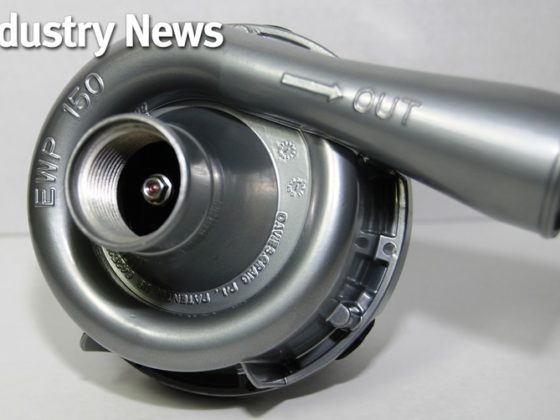,
So, how to begin? Might as well start from the bottom and work our way up by replacing the factory stamped steel oil pan with a larger volume cast aluminum unit.
 These pans are made by Xcessive Manufacturing (formerly Ground Zero). The pan used here is one of the older Ground Zero “GZ” units.
These pans are made by Xcessive Manufacturing (formerly Ground Zero). The pan used here is one of the older Ground Zero “GZ” units.There any several advantages to running Xcessive's high volume aluminum oil pan.
– Greater oil capacity which can reduce oil temperatures and slow the onset of oil starvation.
– 10mm thick pan rails compared to the factory 1.5mm thick pan rails. This gives the engine extra stiffness to resist twisting that can lead to oil pan leaks.
– The bottom of the pan has cooling fins that further reduce oil temperatures and increase the strength of the pan.
– The use of an O-ring seal in place of a gasket to improve sealing.
There are, however, a few negative attributes associated with this oil pan.
– Because the motor mounts attach to the bottom of the block with the oil pan sandwiched between, the engine will sit 8.5mm higher than it came from the factory.
– If a large object were to strike the bottom of the cast aluminum oil pan, there is a risk of cracking or shattering the pan and dumping all the oil out of the engine. If the same thing happened to the factory pan, a dent is the most likely outcome.
– There is no internal oil baffling to keep oil near the pickup
Two of these flaws are not easily remedied, but are not major issues. The engine sitting 8.5mm higher should not significantly affect anything and the risk of damaging the oil pan is remote. The third flaw, the lack of oil baffling, is something that we can address with relative ease though.
 Inside of the oil pan with the windage tray installed. The name of this plate is a bit misleading because rotaries do not actually have crankshaft windage like a piston engine does.
Inside of the oil pan with the windage tray installed. The name of this plate is a bit misleading because rotaries do not actually have crankshaft windage like a piston engine does.
 Here is the inside of the oil pan with the windage tray removed. As you can see there is no internal baffling to keep the oil around the pickup to prevent oil starvation. Also notice the O-ring groove around the perimeter of the pan.
Here is the inside of the oil pan with the windage tray removed. As you can see there is no internal baffling to keep the oil around the pickup to prevent oil starvation. Also notice the O-ring groove around the perimeter of the pan.Most people will say that the best way to guarantee no oil starvation is to implement a dry sump oiling system. However, these systems can be quite expensive, preventing most of us from affording them, and some race classes do not allow their use. Fortunately for those of us in one of these situations there are ways to effectively and inexpensively baffle a wet sump oil pan.
Oil baffling is intended to slow down (or stop) the flow of oil away from the pick up during cornering, acceleration, and braking with the goal of preventing oil starvation by making sure that the pickup is always completely submerged. The most popular method of achieving this (and what we are doing for this project) is using a set of trap doors to regulate where oil is allowed to flow throughout the pan. Think about it like a check valve for oil sloshing around the pan; one door opens to let oil go where you want it while other doors close to keep it there.
 This diagram shows the benefit of using trap door oil baffling during a steady-state 1g flat corner where oil sits at a 45-degree angle relative to the ground. The angle gets steeper as g-forces increase (60-degrees at 2g's).
This diagram shows the benefit of using trap door oil baffling during a steady-state 1g flat corner where oil sits at a 45-degree angle relative to the ground. The angle gets steeper as g-forces increase (60-degrees at 2g's).



1 comment
What apex seals were used in the engine?